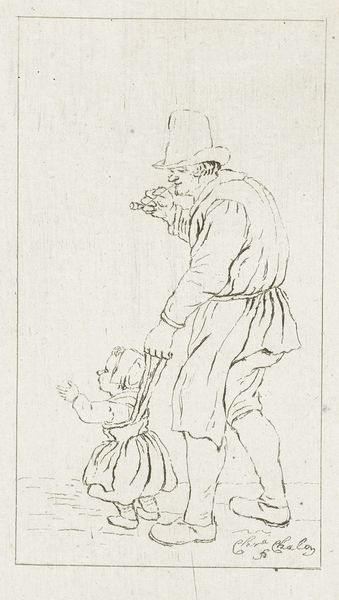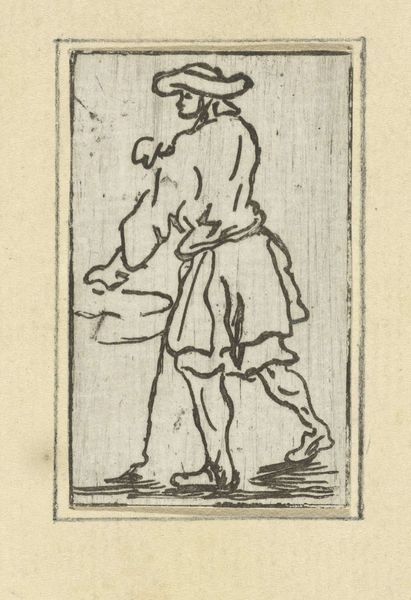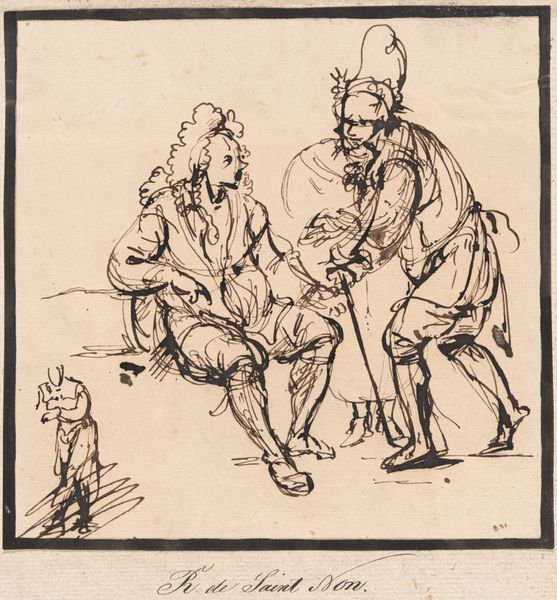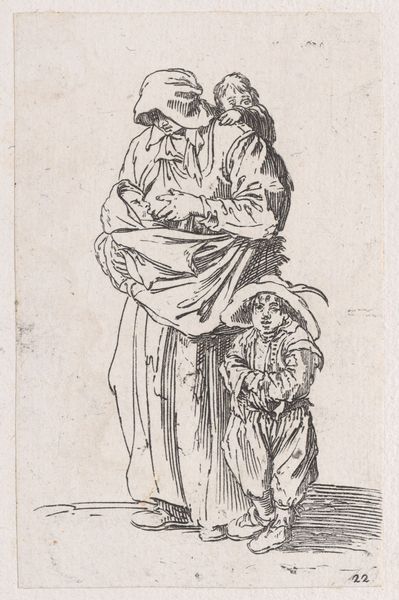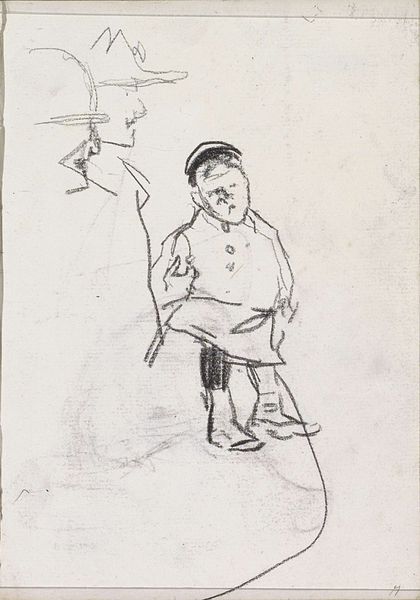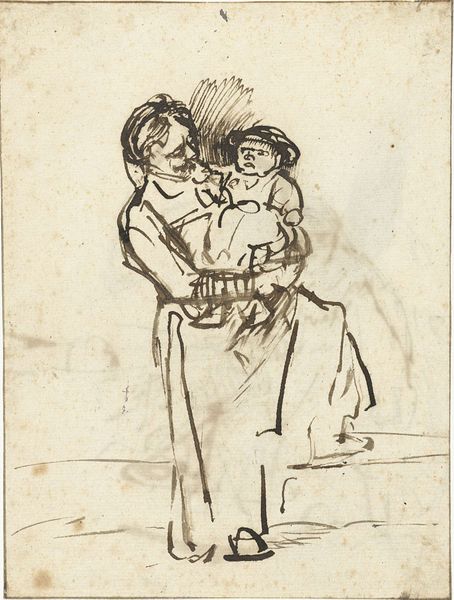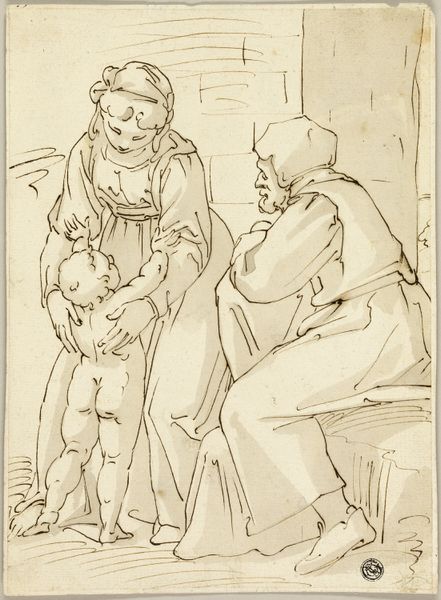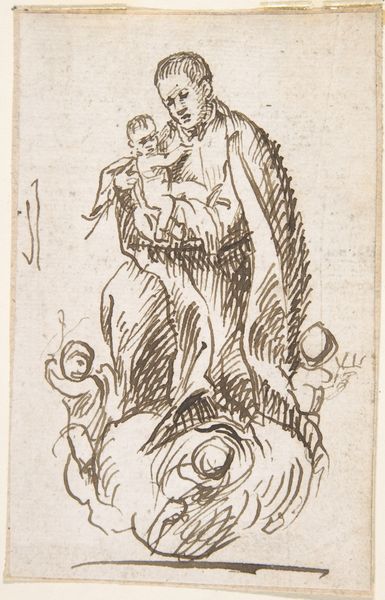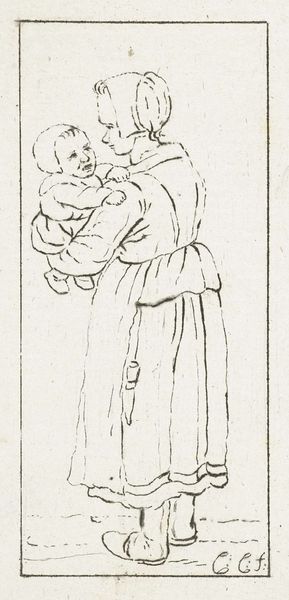
drawing, ink, pen
#
portrait
#
drawing
#
ink drawing
#
baroque
#
pen drawing
#
figuration
#
ink
#
pen
#
genre-painting
Dimensions: height 59 mm, width 36 mm
Copyright: Rijks Museum: Open Domain
Curator: Jan Lievens created this drawing, "Standing Farmer," sometime between 1625 and 1674. It's currently held at the Rijksmuseum. Editor: My immediate impression is a sense of starkness, almost like a captured moment in a grim folk tale. The stark, almost skeletal linework emphasizes the subject’s weathered presence against the roughly sketched background. Curator: Indeed. Lievens, though working in Leiden alongside the young Rembrandt, often depicted everyday figures with an unflinching realism. Consider the implications of depicting a "standing farmer" – an act of monumentalizing someone from a lower social strata. Editor: It makes me consider the labor and societal expectations tied to land ownership. How are such figures – traditionally marginalized – being represented here and why? It also calls into question for whom this image was intended. Was this a piece designed for those within the elite or could there have been alternate readings and interpretations within other social spheres? Curator: Precisely. While patronage networks largely shaped artistic production, this piece reflects an interest in the quotidian that permeates 17th-century Dutch art, and Lievens often employed studies from life to convey perceived realities through figuration, a trend visible throughout the Baroque period. Editor: Speaking of societal impact and the role of such visual representation, doesn't it seem that this rather unsentimental portrait lacks romanticism? There is not necessarily any dignity imbued into the work. Could we interpret the sketch as an assertion of power, a method of 'othering', placing social stratifications on view within artistic media? Curator: One could definitely make the case for the complex power dynamics at play. And the ink drawing medium adds another layer – cheaper and more reproducible than oil, possibly pointing toward wider dissemination. This piece then potentially engages in broad contemporary social commentary through popular accessibility. Editor: I am moved by the recognition of socio-economic factors, while looking towards popular reception and further interpretations as we examine images, allowing us a window into historical, sometimes marginalized, existences. Curator: A worthy summation indeed. This drawing offers a complex interplay between social class, artistic intention, and viewer interpretation, something to bear in mind whenever approaching historical works.
Comments
No comments
Be the first to comment and join the conversation on the ultimate creative platform.
